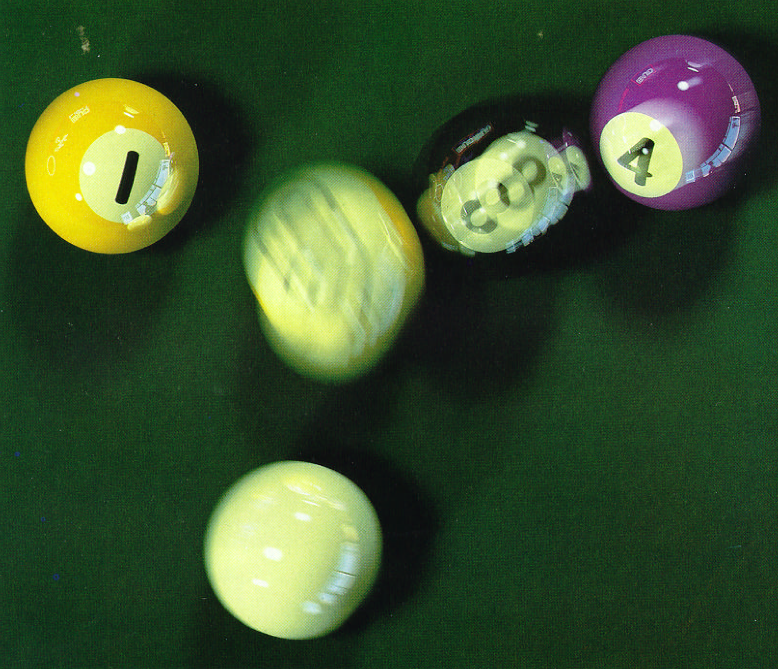
 |
 |
A Reflectance Model for Computer Graphics Robert L. Cook, Kenneth E. Torrance January 1982 A new reflectance model for rendering computer sythesized images is presented. The model accounts for the relative brightness of different materials and light sources in the same scene. It describes the directional distribution of the reflected light and a color shift that occurs as ... more Paper (PDF) Published in Transactions on Graphics, Vol. 1, No. 1, January 1982. |
 |
Distributed Ray Tracing Robert L. Cook, Thomas Porter, Loren Carpenter July 1984 Ray tracing is one of the most elegant techniques in computer graphics. Many phenomena that are difficult or impossible with other techniques are simple with ray tracing, including shadows, reflections, and refracted light. Ray directions, however, have been determined precisely, and this had limited the capabilities of ray tracing. By ... more Paper (PDF) Available in the Proceedings of SIGGRAPH 1984 |
 |
Shade Trees Robert L. Cook July 1984 Shading is an important part of computer imagery, but shaders have been based on fixed models to which all surfaces must conform. As computer imagery becomes more sophisticated, surfaces have more complex shading characteristics and thus require a less rigid shading model. This paper presents a flexible tree-structured shading model ... more Paper (PDF) Available in the Proceedings of SIGGRAPH 1984. |
 |
Stochastic Sampling in Computer Graphics Robert L. Cook January 1986 Ray tracing, ray casting, and other forms of point sampling are important techniques in computer graphics, but their usefulness has been undermined by aliasing artifacts. In this paper it is shown that these artifacts are not an inherent part of point sampling, but a consequence of using regularly spaced ... more Paper (PDF) |
 |
Rendering Antialiased Shadows with Depth Maps William T. Reeves, David H. Salesin, Robert L. Cook July 1987 We present a solution to the aliasing problem for shadow algorithms that use depth maps. The solution is based on a new filtering technique called percentage closer filtering. In addition to antialiasing, the improved algorithm provides soft shadow boundaries that resemble penumbrae. We describe ... more Paper (PDF) Available in the Proceedings of SIGGRAPH 1987. |
 |
The Reyes Rendering Architecture Robert L. Cook, Loren Carpenter, Edwin Catmull July 1987 An architecture is presented for fast high-quality rendering of complex images. All objects are reduced to common world-space geometric entities called micropolygons, and all of the shading and visibility calculations operate on these micropolygons. Each type of calculation is performed in a coordinate system that is ... more Paper (PDF) |
 |
Wavelet Noise Robert L. Cook, Tony DeRose August 2005 Noise functions are an essential building block for writing procedural shaders in 3D computer graphics. The original noise function introduced by Ken Perlin is still the most popular because it is simple and fast, and many spectacular images have been made ... more Paper (PDF) Additional materials: [RapLyrics.txt] Available in the Proceedings of SIGGRAPH 2005 |
 |
Stochastic Simplification of Aggregate Detail Robert L. Cook, John Halstead, Maxwell Planck, David Ryu May 2007 Many renderers perform poorly on scenes that contain a lot of detailed geometry. The load on the renderer can be alleviated by simplification techniques, which create less expensive representations of geometry that is small on the screen. Current simplification techniques for high-quality surface-based rendering tend to work best with element ... more Paper (PDF) Additional materials: [SiggraphSlides.pdf], [WithAndWithoutSimplification.mov] Available in the Proceedings of Siggraph 2007. Available as Pixar Technical Memo #06-05a Other versions: |
 |
3D Paint Baking Proposal Robert L. Cook May 2007 3d paint has long been one of the most expensive parts of rendering at Pixar. This proposal is for a new baking technique that would greatly reduce the run-time cost of 3d paint and require no changes to the existing workflow. The implementation makes heavy use of existing code, which ... more Paper (PDF) Available as Pixar Technical Memo #07-16 |